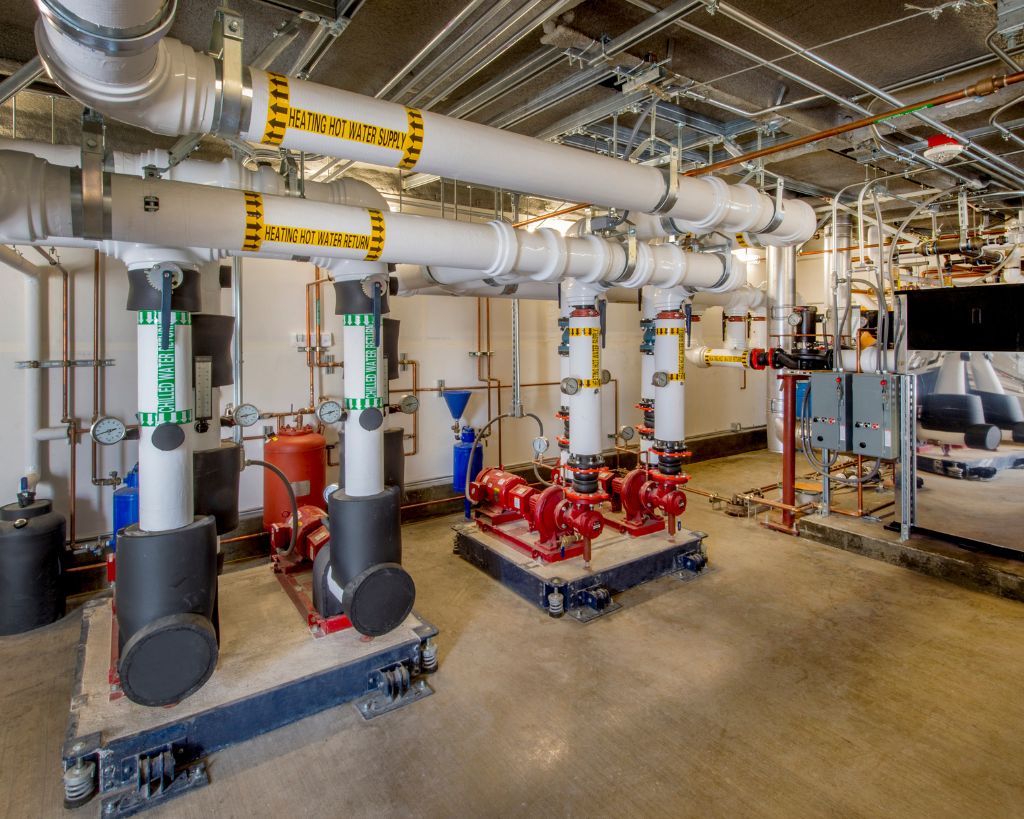What does it do?
Dedicated Outdoor Air Systems supply a constant flow of fresh outdoor air into a building, separate from the air used for heating or cooling. This outdoor air is conditioned to meet the desired temperature and humidity levels before being distributed throughout the building. Unlike traditional HVAC systems, which may recirculate indoor air, DOAS prioritize ventilation with fresh outdoor air, ensuring optimal indoor air quality and comfort.
Advantages
There are 3 categories to consider when trying to understand the significance of a DOAS: Indoor air quality; precision and efficiency; and redundancy.
1. Indoor Air Quality (IAQ)
A DOAS will dramatically improve the indoor air quality of a space–no question. For buildings with no IAQ strategy and no ventilation, a DOAS is likely the best place to start. For a building that already has ductwork–an air handler for instance–implementing a DOAS will come with a slightly more complicated cost/benefit analysis. Typically, air handlers already ventilate. Outside air louvers open when called for to provide fresh air to a space. When would you consider a DOAS in addition to an existing ventilation strategy?–when the air quality or quantity is insufficient. Sometimes we can’t get clean air to go where we want, we’ll talk more about this below. Sometimes the clean air isn’t clean enough. Traditional air handlers have MERV 8 filters. When we talk about clean air, we should use MERV 13 as our minimum level of filtration for breathable indoor air. Can’t we just chuck a MERV 13 filter into our air handler?–nope. Sometimes it makes more sense to modify and optimize a pre-existing system before installing a dedicated system; however, if you want ventilation at a certain level of filtration and at a certain volume, a DOAS is the simplest way to ensure success.
2. Precision and Efficiency
A DOAS requires dedicated duct work; therefore, clean air goes exactly where we tell it. Sometimes we are limited by a building’s existing ductwork. We might have underventilated spaces with poor airflow. Increasing the total amount of outside air to the air handler, won’t necessarily change its ability to distribute that air meaningfully. For instance, suppose our building is half warehouse storage and half dense cubicle office space. Those two spaces require different IAQ considerations. Imagine it is -5F outside, and we are pumping loads of fresh air into our air handler, while watching the utility meter spin, to have a minimal effect on the office space. Alternatively, a small DOAS, serving just the office space, would precisely deliver efficiently conditioned, well-filtered air. The building-wide air handler could be set to minimum outside air to serve the warehouse space, dividing the two zones, to most efficiently and effectively serve each.
3. Redundancy
Take the same building as before on the same winter day. What happens when the boiler breaks? No heat. For an air handler, no heat means no fresh air. The outside air louvers will close to protect the coil from freezing. Without a DOAS, one failure has rippling effects. The air in our densely packed office will quickly become toxic–what do we do, open a window on a -5F day with a broken boiler? By separating responsibilities we create redundancy. With a DOAS, in a no-heat situation, the office staff might be able to finish out the day before the building ever felt cold, being productive and healthy. And if we reverse the situation–the DOAS goes down–we can still rely on the air handler for minimum, if imprecise ventilation. The goal is to reduce downtime and maintain quality output.
Conclusion
This is how we think about it: The health and comfort of your staff is essential to a successful, sustainable enterprise. Science shows that a healthy, comfortable work environment significantly impacts the bottom line. There is no doubt. The next question is how you improve and maintain the health and comfort of a space. A DOAS is just one asset you could utilize. If you need quality, precision, and redundancy–three concepts we happen to love, you might consider a Dedicated Outdoor Air System.




